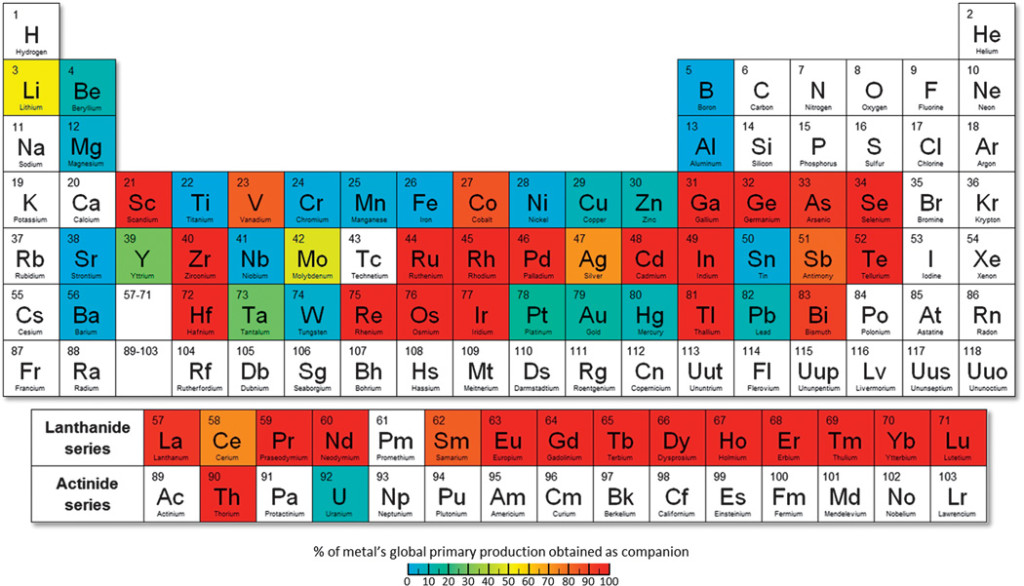Over the course of the past few months, we have featured two classes of metals and minerals, which we believe deserve more attention than they are currently being awarded. Expanding on the findings of our 2012 “Gateway Metals and the Foundations of American Technology” report, in which we focused on a group of five “Gateway” metals which “unlock” a series of “Co-Products” – tech metals increasingly indispensable to innovation and development.
In spite of the fact that the five Gateway Metals Aluminum, Copper, Nickel, Tin and Zinc and their Co-Products are growing in significance, stakeholders in academia, policy making and industry have been slow to take note of the correlation between them. One notable exception is a study by N.T. Nassar, T.E. Graedel, and E.M. Harper, published in Science Advances in April of 2015.
The authors of “By-product metals are technologically essential but have problematic supply” cast their net a bit wider using a somewhat more scholarly approach and different terminology to describe “Gateway Metals” and “Co-Products” – they refer to them as “Host Metals” and “By-Product” or “Companion Metals.” Nomenclature aside, their findings and conclusions are similar to the ones we have drawn.
Of particular interest is their depiction of the periodic table of elements showing “companionality” based on data for 62 metals and metalloids. Their conclusion: “61%, or 38 of the 62 metals evaluated, have the majority (that is, >50%) of their global production obtained as a companion.”
The bottom line, according to Nassar, Graedel and Harper, should sound familiar to American Resources followers:
“It is undeniable that the widespread use of companion metals has resulted in markedly improved performance in many product sectors. Sustaining those uses may become a challenge going forward because of the dependence of companion metal supplies on the production of host metals. (…)
As it now stands, much of modern technology depends on metals whose supplies are uncertain and whose market transactions are largely opaque; in concert, this produces a supply situation that may prove difficult to sustain.”





